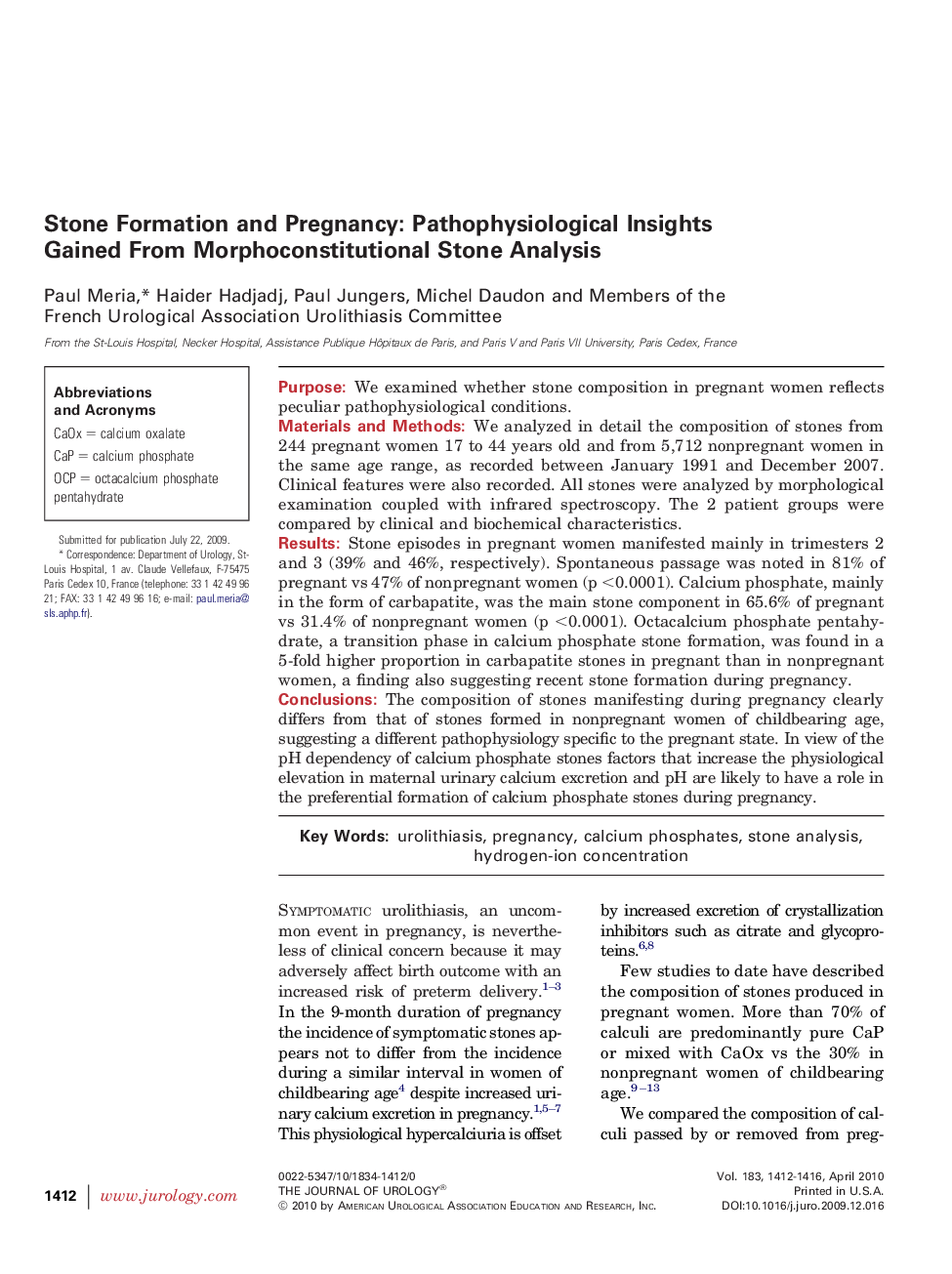| Article ID | Journal | Published Year | Pages | File Type |
|---|---|---|---|---|
| 3873964 | The Journal of Urology | 2010 | 5 Pages |
PurposeWe examined whether stone composition in pregnant women reflects peculiar pathophysiological conditions.Materials and MethodsWe analyzed in detail the composition of stones from 244 pregnant women 17 to 44 years old and from 5,712 nonpregnant women in the same age range, as recorded between January 1991 and December 2007. Clinical features were also recorded. All stones were analyzed by morphological examination coupled with infrared spectroscopy. The 2 patient groups were compared by clinical and biochemical characteristics.ResultsStone episodes in pregnant women manifested mainly in trimesters 2 and 3 (39% and 46%, respectively). Spontaneous passage was noted in 81% of pregnant vs 47% of nonpregnant women (p <0.0001). Calcium phosphate, mainly in the form of carbapatite, was the main stone component in 65.6% of pregnant vs 31.4% of nonpregnant women (p <0.0001). Octacalcium phosphate pentahydrate, a transition phase in calcium phosphate stone formation, was found in a 5-fold higher proportion in carbapatite stones in pregnant than in nonpregnant women, a finding also suggesting recent stone formation during pregnancy.ConclusionsThe composition of stones manifesting during pregnancy clearly differs from that of stones formed in nonpregnant women of childbearing age, suggesting a different pathophysiology specific to the pregnant state. In view of the pH dependency of calcium phosphate stones factors that increase the physiological elevation in maternal urinary calcium excretion and pH are likely to have a role in the preferential formation of calcium phosphate stones during pregnancy.
